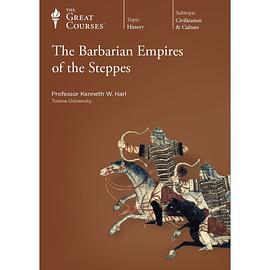The Barbarian Empires of the Steppes 豆瓣
作者:
Kenneth W. Harl
2014
The word "barbarian" quickly conjures images of Attila the Hun and Genghis Khan. Yet few people realize these men belong to a succession of nomadic warriors who emerged from the Eurasian steppes to conquer civilizations. It's a part of ancient and medieval history that's often overlooked, but for an accurate view of how the world evolved, it's essential. Covering some 6,000 miles and 6,000 years, this eye-opening course illuminates how a series of groups - from the Sacae and Sarmatians to the infamous Huns and Mongols - pushed ever westward, coming into contact with the Roman Empire, Han China, and distant cultures from Iraq to India. Along the way, you'll learn how these nomads caused a domino effect of displacement and cultural exchange; meet fascinating figures such as Tamerlane, the "Prince of Destruction"; witness struggles to control the legendary Silk Road; trace the spread of Buddhism and Islam, and more. By looking past the barbarian stereotype, you'll understand who these people were, the significance of their innovations - which include stirrups, saddles, and gunpowder - and the magnitude of their impact. Of course, these warriors did wage campaigns of terror, and you'll hear many accounts of violence as well. Led by an award-winning professor, these 36 lectures provide new insights on how the world was shaped and introduce you to cultures and empires you've likely never encountered.
